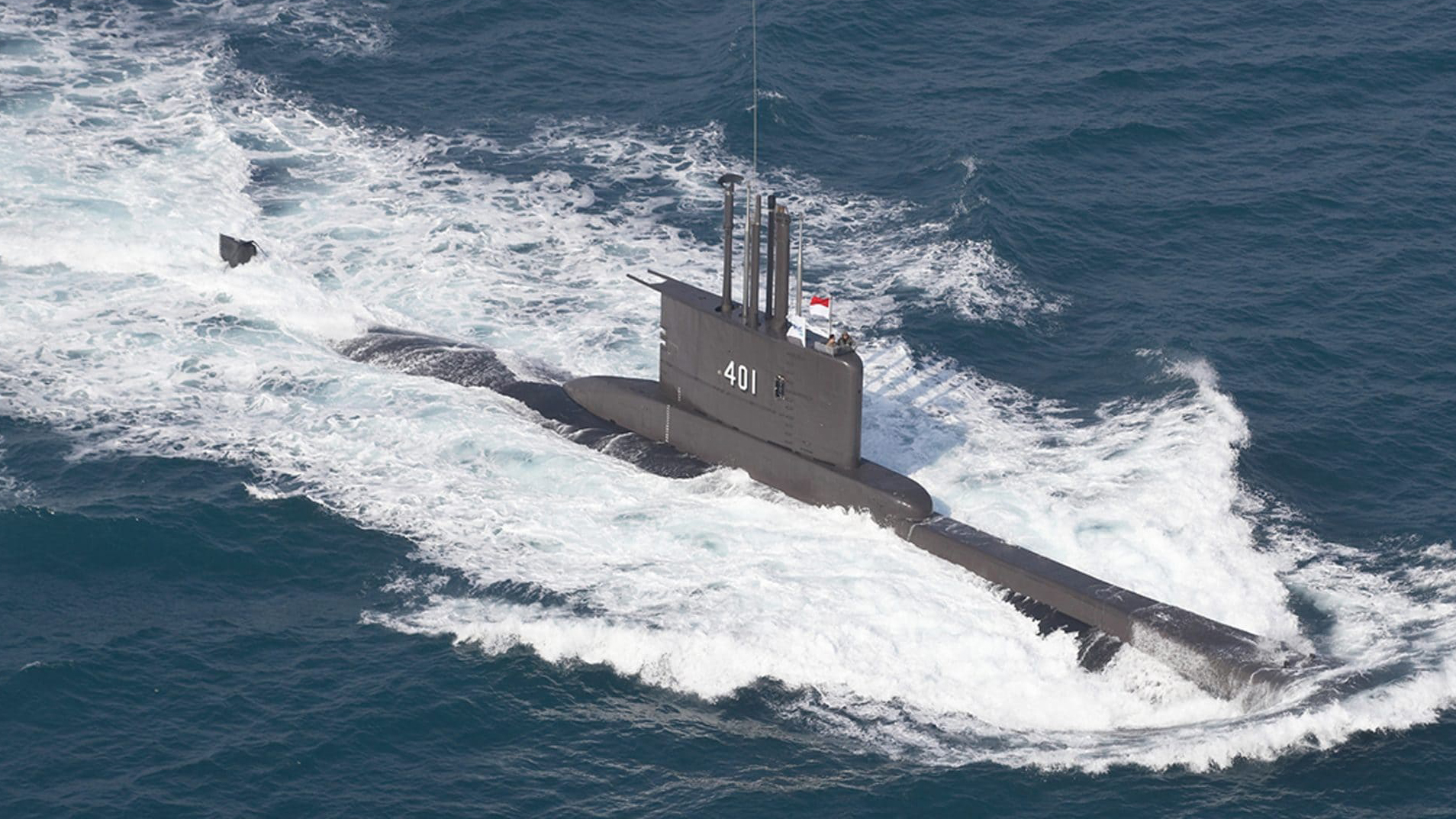The Indonesian Navy has launched a search effort to determine the location of the Cakra class submarine Nanggala after communications were broken off unexpectedly, at around 4:30 AM local time. The last known position of the submarine, which had been taking part in a training exercise in the Bali Sea today, was off the coast of Surabaya, around 60 miles north of Bali.
The Nanggala, one of two Type 209/1300 class diesel-electric attack submarines completed for Indonesia in West Germany in the early 1980s, had been participating in an anti-submarine warfare torpedo drill when it failed to report back, an Indonesian Navy spokesman confirmed. The submarine, which has a submerged displacement of around 1,390 tons and is a little over 195 feet long, is assigned to the Indonesian Eastern Fleet Command.

According to some, apparently unconfirmed reports, contact was lost after the Nanggala had been authorized to dive into deeper waters. The waters nearby where the submarine was last reported are said to be around 2,300 feet deep.
There are 53 crew members are aboard the submarine, which typically has a complement of 34 personnel, according to the 1993 edition of Combat Fleets of the World. It’s unclear why such a significant number of additional individuals were on board for this exercise.
The Cakra class boats are armed with eight 533mm bow tubes that are used to launch AEG SUT heavyweight torpedoes, up to 14 of which can be carried. While the torpedo training drill has been described as a ‘live fire’ exercise, it’s unclear if the torpedoes used were fitted with live warheads.
A search effort is now underway to locate it. Several Indonesian Navy vessels have been noted in the vicinity of the area and Indonesian officials have also called upon Australia and Singapore to assist — both the Republic of Singapore Navy and the Royal Australian Navy operate specialist submarine rescue vessels.
Among the Indonesian Navy vessels on the scene, according to reports, are the hydrographic ship Rigel, the first-in-class corvette Fatahillah, the first-in-class corvette Bung Tomo, and the Kapitan Pattimura class corvette Teuku Umar. Other accounts state that another two Indonesian submarines, plus aircraft, have been committed to the search, as well as the Spica, the sister vessel to the Rigel.
Singapore has sent the rescue ship MV Swift Rescue to help the search, as part of a joint agreement between the two countries covering submarine rescue. The Swift Rescue is a specialized submarine support and rescue vessel (SSRV) operated by the Republic of Singapore Navy. It is equipped with a deep-submergence rescue vehicle (DSRV) to retrieve crew from stricken submarines.

Reuters has reported that an aerial search conducted in the Bali Sea ha revealed an oil spill near the Nanggala’s last known dive location, but it’s not yet known if this is related to the missing submarine.
Both of the Cakra class submarines underwent extensive refits with the Daewoo Shipyard in South Korea, with work on the lead boat, Cakra, being completed in 2005. The upgrades to Nanggala were completed in 2011. The work reportedly included new batteries, an engine overhaul, and a modernized combat system.
The Indonesian Navy’s two Cakra class submarines serve alongside the three more modern Nagapasa class diesel-electric attack submarines, based on a South Korean design. The most recent of these, the Alugoro, was the first to be completed in Indonesia and entered service in March.
We will continue to update this developing story as more information becomes available.
Contact the author: thomas@thedrive.com
